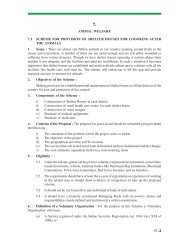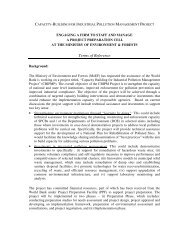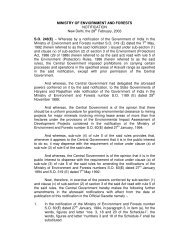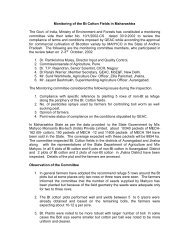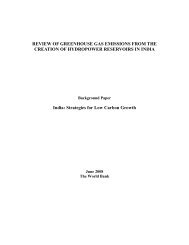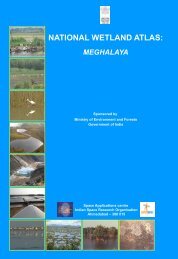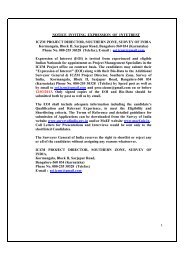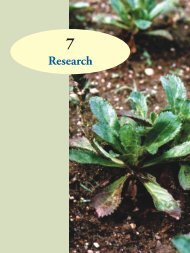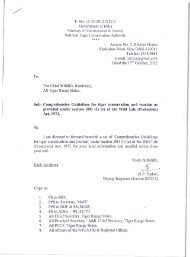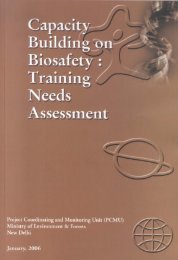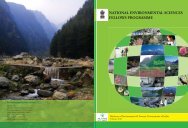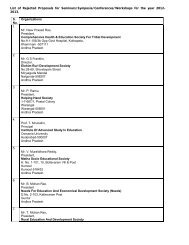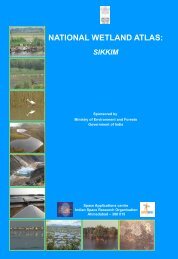rainforest restoration - Ministry of Environment and Forests
rainforest restoration - Ministry of Environment and Forests
rainforest restoration - Ministry of Environment and Forests
Create successful ePaper yourself
Turn your PDF publications into a flip-book with our unique Google optimized e-Paper software.
18indicators <strong>of</strong> successAccording to the Society for Ecological Restoration International Science <strong>and</strong> Policy Working Group, anecosystem has recovered <strong>and</strong> is restored when:1. It contains sufficient biotic <strong>and</strong> abiotic resources to continue its development without further assistance orsubsidy.2. It is suitably integrated into a larger ecological matrix, l<strong>and</strong>scape, or contiguous ecosystems, with which itinteracts in terms <strong>of</strong> biotic <strong>and</strong> abiotic flows <strong>and</strong> cultural interactions.3. It contains a characteristic assemblage <strong>of</strong> the species that occur in the reference ecosystem <strong>and</strong> thatprovide appropriate community structure.4. It consists <strong>of</strong> indigenous species to the greatest practicable extent.5. All functional groups necessary for the continued development <strong>and</strong>/or stability are represented or, if theyare not, the missing groups have the potential to colonize by natural means (corridors, river systems, row<strong>of</strong> trees).6. The physical environment <strong>of</strong> the restored ecosystem is capable <strong>of</strong> sustaining reproducing populations <strong>of</strong>the species necessary for its continued stability or development along the desired path.7. Potential threats to the health <strong>and</strong> integrity <strong>of</strong> the restored ecosystem from the surrounding l<strong>and</strong>scapehave been eliminated or reduced as much as possible.8. The restored ecosystem is self-sustaining to the same degree as its reference ecosystem, <strong>and</strong> has thepotential to persist indefinitely under existing environmental conditions. Nevertheless, aspects <strong>of</strong> itsbiodiversity, structure <strong>and</strong> functioning may change as part <strong>of</strong> normal ecosystem development, <strong>and</strong> mayfluctuate in response to normal periodic stress <strong>and</strong> occasional disturbance events <strong>of</strong> greater consequence.As in any intact ecosystem, the species composition <strong>and</strong> other attributes <strong>of</strong> a restored ecosystem mayevolve as environmental conditions change.Too <strong>of</strong>ten, reforestation projects … become dominated by numerical targets <strong>and</strong> quotas, with ‘success’ measured interms <strong>of</strong> seedlings planted, rather than forest established.~ Richard T. Corlett, The Ecology <strong>of</strong> Tropical East Asia



